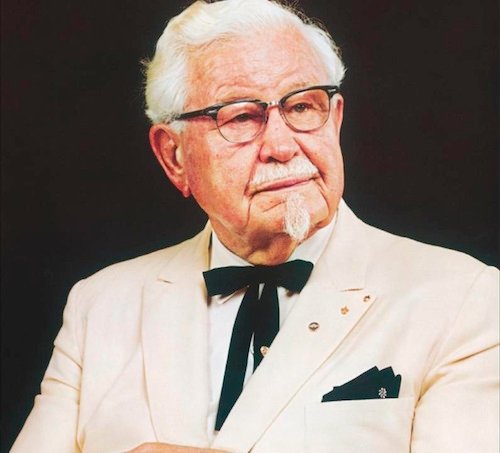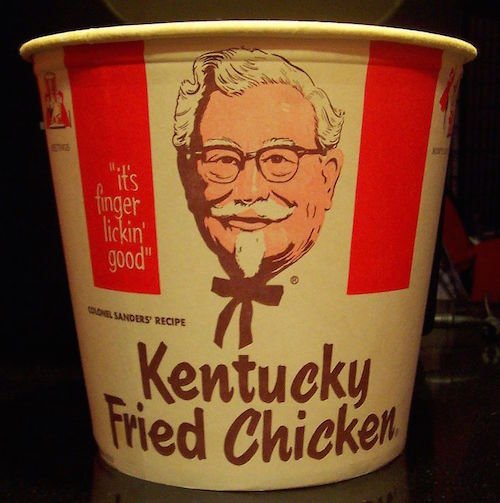Secret story of "MR. KFC Grandfather"
Secret story of "MR. KFC Grandfather"
"Everything You Probably Did not Know About Colonel Sanders" by Menuism.
You may have seen a picture of a kernel drawn on a KFC wrapper or his painting by Norm MacDonald in a recent advertisement. But there is a high probability that he is not a real person, either, or who the Colonel Sanders is. Obviously, Harland Sanders was a real person and so was his real life.

He was born in Indiana in 1890. My father passed away and my mother learned to cook for my younger brothers when I was six years old working in a canned tomato factory.
Even though we had no one to care for, we were well. I knew that I should not have a fire at home.
In 1902, my mother remarried. The relationship between Holland and his new father was not so good. The following year, 14 years old, Holland left home and got a job on the farm. After working in the farms and trams for several years, he deceived his age and enlisted in the army.
But it was not the county where the kernel was named. The Kentucky Kernal is an honorary title given unofficially in the state of the state. Sanders was first named in 1935, and later received his certificate again in 1949. After receiving the title "Kernel" again, Sanders began his white emblem and bow tie in earnest. It is said to have worn white to hide flour stains.
Sanders learned his law as he gained his career, sold insurance, tires and lamps, operated a ferries company, and worked as a midwife. Due to his urgent nature, he made some wrong business betting. Because they rarely avoided fighting (they did not feel like struggling as if they had fought in court), they would lose their jobs. But his roast chicken's temperament may be a factor in making Kentucky Fried Chicken.
During the Great Depression Sanders operated Shell's gas station in Corbin, Kentucky, called "Hell's Half-Acre". He began to sell rice to truck drivers passing by using his dining table. The 'ham & steak' menu was popular and opened Sanders Café across the street.
He set up a big sign to let drivers who drove along the highway stop at his gas station. But it happened that Matt Stuart, who runs a rival standard oil station, painted the signs. Sanders again threatened to "blow up his fucking head," and fixed the sign.
When he heard Stewart paint the sign again, Sanders ran with two employees and a gun. Stewart responded with a gun, and a Sanders employee was shot and killed. Sanders shot Stuart 's shoulder. Stewart was sentenced to 18 years in prison for murder, and Sanders was arrested, but released on self-defense. While Stewart was in prison, Sanders completely took control of the local gas station market.
It was not the first time I had sold fried chicken in Sanders' restaurant. It took me 30 minutes to cook. Sanders began experimenting with a pressure vessel that could cook chicken faster than a frying pan. She also completed a recipe known as "11 herbs and spices". In 1939, food reviewer Duncan Heinz included Sanders Cafe in the adventure section of Good Eating, a nationwide restaurant guide.

Sanders' business was booming for a while, but a few factors made it difficult to sustain success. The gasoline rationing caused by World War II hid the traces of tourists, and the new highway in 1955 was far from Sanders' restaurant. Later, with the help of her then lover Claudia, she decided to franchise her own chicken frying method and recipe.
Sanders' friend, Pete Harman, made his first kernels in 1952 in Salt Lake City, Utah. The name of the chicken was "Kentucky Fried Chicken" and it was this man who made the famous bucket-shaped packaging container. Sanders was in his 60s at that time, and lived with a few social security checks. Biographer Josh Ozersky says:
He disguised himself in his face, roaming the Cadillac, asking the DriveSurf restaurant owners for a 5 cents fee per chicken for his recipe. He slept in the back seat of the car and contracted verbally.
By 1964, Sanders had over 600 franchise stores, sold his stake to KFC for $ 2 million, and decided to pay for his personal rights on a regular basis. It was about 75 years old.
In 1966 KFC was listed, with millions of shareholders. Sanders felt like he was being treated unfairly. He insulted executives for 40 minutes at the first general shareholders' meeting after the listing, claiming executives ruined their reputation. But I could not make many merchants on my side.
Nevertheless, I continued to be a spokesperson for the company, and I even tried to sue KFC. The case was agreed for $ 1 million on condition that Sanders no longer criticized KFC and the menu. But he did not stop. In an interview with the New Yorker in 1970, he criticized KFC's new gravy sauce recipe, "My dog hates it."
I do not want to be the richest in the cemetery.
Kennel Holland Sanders, who left the world for leukemia in 1980, donated most of his property to charities. After he died, his image became the marketing caricature of KFC, often making people who remember him embarrassed.
@andydream, I gave you a vote!
If you follow me, I will also follow you in return!
Enjoy some !popcorn courtesy of @nextgencrypto!